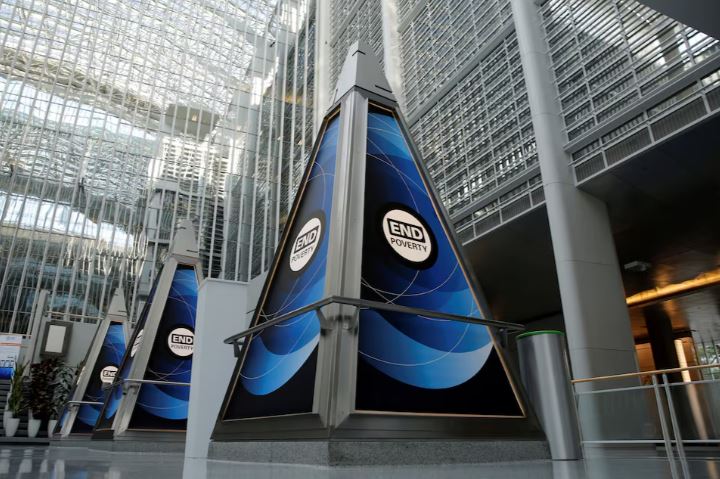World Bank warns of 'lost decade' as global growth slows to three-decade low

Structural slowdowns across investment, productivity, trade and labour force expansion are dragging the global economy toward its weakest potential growth rate in three decades.
The global economy is moving toward what the World Bank terms a “lost decade” of economic growth.
According to the Bank’s latest long-term growth prospects report, structural slowdowns across investment, productivity, trade and labour force expansion are dragging the global economy toward its weakest potential growth rate in three decades.
More To Read
- World Bank warns political interference weakening Kenya’s state-owned enterprises
- WHO calls for urgent action to achieve universal health coverage by 2030
- African countries take lead in push toward universal health coverage for 1.5 billion people by 2030
- Developing countries’ debt servicing cost hit 50 year high on high interest
- African land policy reforms benefit women and communities, but 18-country review reveals key gaps
- Why mastering Generative AI is the fastest way to boost your career and salary
“If current trends continue, the global rate of potential growth, the maximum rate at which an economy can grow without igniting inflation, is expected to fall to a three-decade low over the remainder of the 2020s,” the report reads.
It estimates the average global potential GDP growth to decline by roughly a third from the rate that prevailed in the first decade of this century, to 2.2 per cent a year.
For developing economies, the decline will be equally steep: from six per cent a year between 2000 and 2010 to four per cent a year over the remainder of this decade.
“These declines would be much steeper in the event of a global financial crisis or a recession.”
Current global growth prospects prevail around 3.0 per cent and 3.1 per cent according to the latest projections by the International Monetary Fund (IMF).
Unlike previous downturns driven by isolated events, the report underscores that the current stagnation reflects a broader, more entrenched weakening of the growth engines that powered the global economy since the early 1990s.
Particularly in Sub-Saharan Africa, the lender highlights that growth potential output has been below the EMDE average since at least 2000.
The effects of the Covid-19 pandemic and Russia’s invasion of Ukraine depressed growth in the region's potential output further, although not as much as in some other regions.
“This long period of anaemic potential growth, with growth rates barely above the region’s population growth, has resulted in stagnant growth in per capita potential output,” the lender says.
“Without economic reforms, potential growth in SSA is likely to weaken further over the rest of this decade, as growth in the supply of labour moderates and capital accumulation wanes.”
Key obstacles to economic growth in the region include weak capacity in many economies to adopt frontier technologies and address climate change.
Additionally, heavy reliance on commodity exports increases exposure to price shocks, making growth and investment more volatile.
Impact of slowed growth
Generally, weaker long-term growth gives rise to a wide range of challenges.
First, it slows the pace of poverty reduction. At projected growth rates, the goal of reducing global extreme poverty to three per cent of the population by 2030 is now out of reach, the lender says.
Second, slower output growth tends to reduce the resources available to invest in solving problems confronting the economy.
Without sustained investment growth, the World Bank reckons that it will be difficult, if not impossible, to address climate change and make material progress toward other development goals.
Third, slower long-term output growth implies limited job creation and wage growth, which provides fertile ground for social tensions and is likely to entail slower transitions from informal to formal economic activity.
Finally, weaker long-term output growth curtails the resources available to pay off mounting debt loads, potentially undermining debt sustainability and leading to financial stress.
Top Stories Today











































